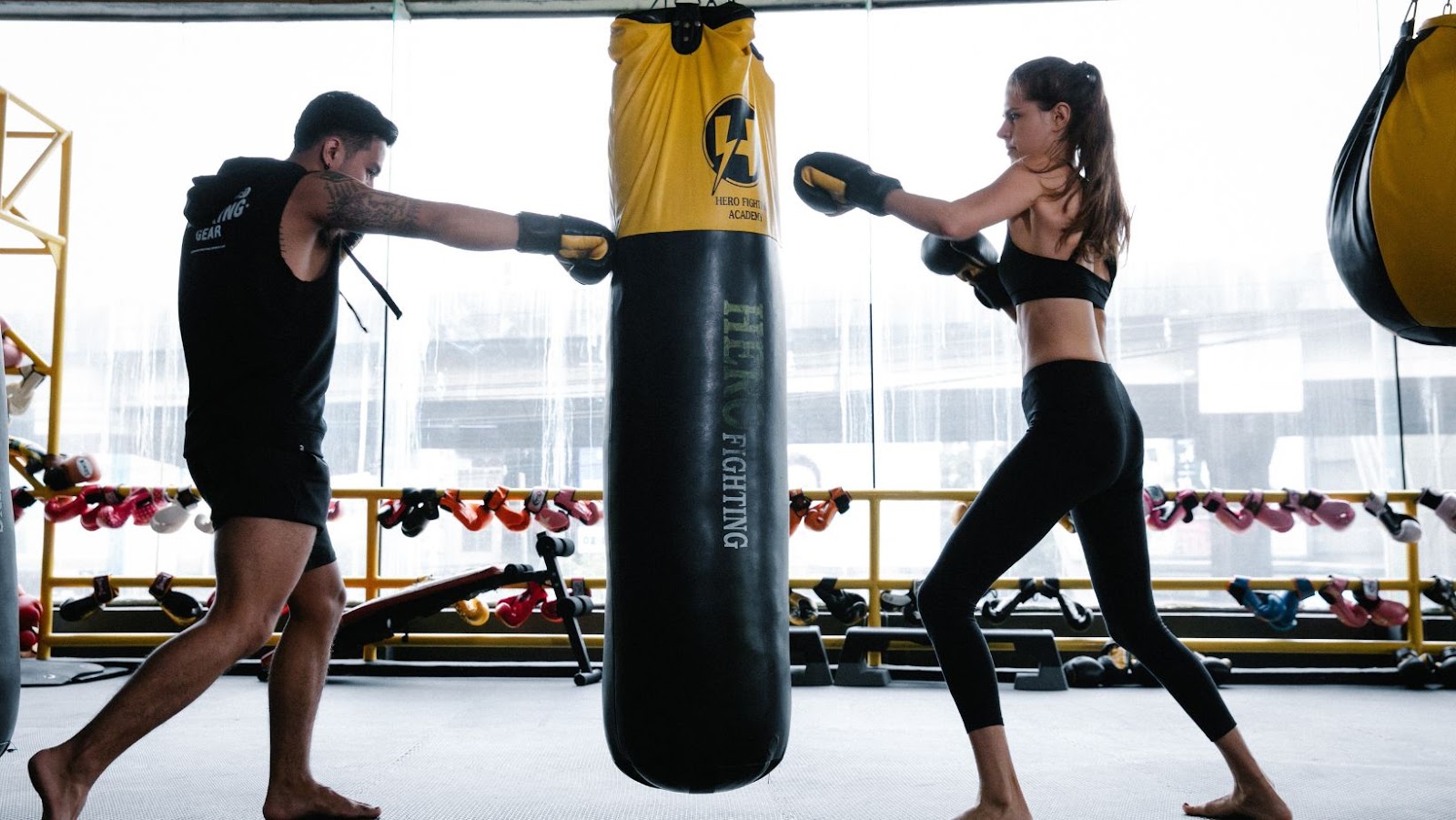Different boxing weight classes have always intrigued me. I remember when I was younger, I would see the different weight classes represented in different ways. For example, in professional boxing, there are generally eight different weight classes. The lightest weight class is the featherweight division, which has a limit of 126 pounds (57 kg). The heaviest weight class is the heavyweight division, with no upper limit. In between these two extremes are the bantamweight (118 lb/53.5 kg),
Different Boxing Weight Classes
Boxing weight classes are divided into eight separate categories. These categories are: heavyweight, light heavyweight, cruiserweight, light cruiserweight, middleweight, welterweight, lightweight, and featherweight.
The weight limits for each class vary by gender and organization. For example, the International Boxing Federation (IBF) has different weight limits for male and female boxers. The IBF also has separate weight limits for amateurs and professionals.
The professional ranks are further split into sub-categories. For example, the IBF’s Cruiserweight limit is 200 pounds (91 kg) but the organization’s “Junior Cruiserweight” limit is 175 pounds (79 kg).
The different boxing weight classes provide boxers of different sizes and strengths an opportunity to compete against opponents of a similar physical stature. This ensures that fights are fair and evenly matched.
The History of Boxing Weight Classes
The history of boxing weight classes can be traced back to the early days of the sport, when there were no official rules or regulations. The first known instance of weight divisions being used in boxing was in 1743, when Jack Broughton, considered the father of modern boxing, introduced the first set of rules. These rules included weight divisions, with the heaviest weight class being unlimited.
Over the next hundred years, various changes were made to the weight classes, but it wasn’t until 1920 that the current system was introduced. The International Boxing Union (IBU) was founded that year and standardized the weight classes that are still used today. There have been a few changes since then, but generally speaking, the weight classes have remained the same.

The following is a list of the currentweight classes used in boxing, along with their history and some notable fighters in each division:
Heavyweight: Unlimited weight until 1880 when it was changed to 176 pounds (80 kg). In 1903, it was raised to 190 pounds (86 kg) and then back down to 175 pounds (79 kg) in 1919. It has remained at heavyweight ever since.Notable fighters: Muhammad Ali, Joe Frazier, George Foreman
Cruiserweight: 190 pounds (86 kg) until 1967 when it became 175 pounds (79 kg). In 1979, it went back up to 190 pounds (86 kg) and then finally settled at its current weight of 200 pounds (91 kg) in 1983.Notable fighters: Evander Holyfield, David Haye
Light heavyweight: 175 pounds (79 kg) from 1920-1967 before increasing to its current weight of 175 pounds (79 kg).Notable fighters: Sergey Kovalev, Adonis Stevenson
Super middleweight: 168 pounds (76 kg) from 1967-1983 before increasing to its current weight of 175 pounds (79 kg).Notable fighters: Andre Ward, James DeGale
Middleweight: 160 pounds (73 kg) from 1920-1967 before increasing to its current weight 168 pounds (76kg).Notable fighters: Gennady Golovkin, Canelo Alvarez
Junior middleweight: 154 pounds (70 kg) from 1967-1979 before increasing to 158 pounds (72kg). In 1988 it increased again to its current weight of 160 pounds(73kg).Notable fighters: Floyd Mayweather Jr., Miguel Cotto
Welterweight: 147 pounds (67kg) from 1920-1967 before increasing to its current weight 148pounds(68kg).Notable fighters: Manny Pacquiao, Kell Brook
Junior welterweight: 140pounds(64kg), established in 1954.Notable fighters: Terence Crawford, Danny Garcia
Lightweight : 135pounds(61kg), established in 1920. WBA elevated their “super champion”to 140poundsin 2011 leaving “champion”as 135pounds .Notable fighter : Vasyl Lomachenko, Mikey Garcia
Super featherweight : 130pounds(59kg), established in 1948 by The New York State Athletic Commission. WBA elevated their “super champion”to 135poundsin 2011 leaving “champion”as 130pounds .Notable fighter : Gervonta Davis Featherweight : 126pounds(57kg), established in 1920 . WBA elevated their “super champion”to130poundsin 2011 leaving “champion” as 126pounds .Notable fighter : Leo Santa Cruz Junior featherweight : 122pounds(55kg), established by The New York State Athletic Commission in 1966 . WBA elevated their “super champion”to126poundsin 2011 leaving “champion” as 122pounds .Notable fighter : Rey Vargas Super bantamweight 118pounds(53kg), estabished by The New York State Athletic Commissionin 1950 WBA elevated their “super champion”to122poundsin 2011 leaving “champion” as 118pound Guillermo RigondeauxBantamweight 115pound(52kg), estabished by The New York State Athletic Commissionin 1922 ,Notabke fighter Oscar ValdezSuper flywight 112poundS50KG , estabished by The New York State Athletic Commissionin 1950 Flywight 108poundS49KG , estabished by The New York State Athletic Commissionin 1912 ,Notabke fighter Roman GonzalezLight flaywight 105poundS48KG , estabished by The World Boxing Council in 1989 Minimumweigh 46KG
The Different Boxing Weight Classes Today
The different boxing weight classes today include the following:
Super heavyweight: over 200 pounds (90.7 kg)
Heavyweight: 200 pounds (90.7 kg) and under
Cruiserweight: 190 pounds (86.2 kg) and under
Light heavyweight: 175 pounds (79.4 kg) and under
Super middleweight: 168 pounds (76.2 kg) and under
Middleweight: 160 pounds (72.6 kg) and under
Welterweight: 147 pounds (66.7 kg) and under
Junior welterweight: 140 pounds (63.5 kg) and under
Lightweight: 135 pounds (61.2 kg) and under
Junior lightweight: 130 pounds (58.9 kg) and under
Featherweight: 126 pounds (57.2 kg) and under
Junior featherweight: 122 pounds (55.3 kg) and under
Bantamweight: 118 pounds (53.5kg )and under
at junior bantamweight 115-pound limit was also used in a few championship fights throughout boxing history
How the Boxing Weight Classes are Determined
The different boxing weight classes are determined by the International Boxing Federation (IBF), the World Boxing Association (WBA), the World Boxing Council (WBC), and the World Boxing Organization (WBO). Each organization has its own method for determining the weight classes, but they are generally similar.
The IBF, WBA, and WBC use a system where the weight classes are divided into 8-pound increments. For example, the lightest class is 105 pounds, followed by 113 pounds, 121 pounds, and so on. The WBO uses a system where the weight classes are divided into 10-pound increments. So, the lightest class is 105 pounds, followed by 115 pounds, 125 pounds, and so on.
The reason for the different methods is that the WBO believes that their system is more fair for fighters who are close to the cutoff for a particular weight class. For example, if two fighters weigh in at 130 pounds, one will be able to compete in the 131-pound weight class while the other will have to compete in the 135-pound class. The WBO feels that their system gives fighters a better chance of competing against opponents of similar size.
The Benefits of Boxing Weight Classes
While there are many benefits to boxing weight classes, perhaps the most important is that it helps to create a level playing field. By pitting fighters of similar size and weight against each other, weight classes help to ensure that the outcome of a bout is determined by skill, rather than by physical superiority.
In addition, weight classes help to keep fights fair andsafe. If two fighters of radically different sizes were to face off against each other, the larger fighter would have a significant advantage in terms of strength and power. This could result in serious injury to the smaller fighter.
Finally, weight classes help to add excitement and interest to the sport of boxing. Fans can follow the fortunes of their favorite fighters in specific weight classes, and strive to see who will be crowned champion in each division.
The Drawbacks of Boxing Weight Classes
While weight classes are important in boxing, there are also drawbacks to having weight classes. For example, weight classes can encourage fighters to “cut” weight, which means they severely restrict their calorie intake and water intake in order to make the weight limit for their class. This can lead to serious health problems, including dehydration, electrolyte imbalance, and heart problems. Additionally, weight cutting can make fighters weak and fatigued, which can impact their performance in a fight.
The Future of Boxing Weight Classes
The future of boxing weight classes is always in flux. The sport is constantly evolving, and as such, the weight classes are always subject to change. That being said, there are a few weight classes that seem to be here to stay.

Flyweight: The lightest weight class in boxing, flyweights are typically between 112 and 118 pounds.
Super Flyweight: A slightly heavier weight class, super flyweights typically weigh in between 115 and 122 pounds.
Bantamweight: Bantamweights are the third heaviest weight class, and typically weigh 118-126 pounds.
Featherweight: Featherweights are the fourth heaviest weight class, and typically weigh 126-130 pounds.
Lightweight: The fifth heaviest weight class, lightweights typically weigh 130-135 pounds.
Is There a Boxing League
As far as we can tell, there is no formal boxing league in existence. There are, however, a number of different sanctioning bodies that oversee different levels and variations of the sport. You may be interested in checking out some of these organizations if you’re looking to get involve in boxing:
-The International Boxing Association (AIBA) is the international governing body for amateur boxing.
-The World Boxing Council (WBC) is one of the four major sanctioning bodies in professional boxing, and maintains a ranking system for both male and female boxers.
-The World Boxing Organization (WBO) is another major professional boxing sanctioning body. Like the WBC, they maintain separate rankings for male and female boxers.
-The International Female Boxers Association (IFBA) is a sanctioning body specifically for female professional boxers
